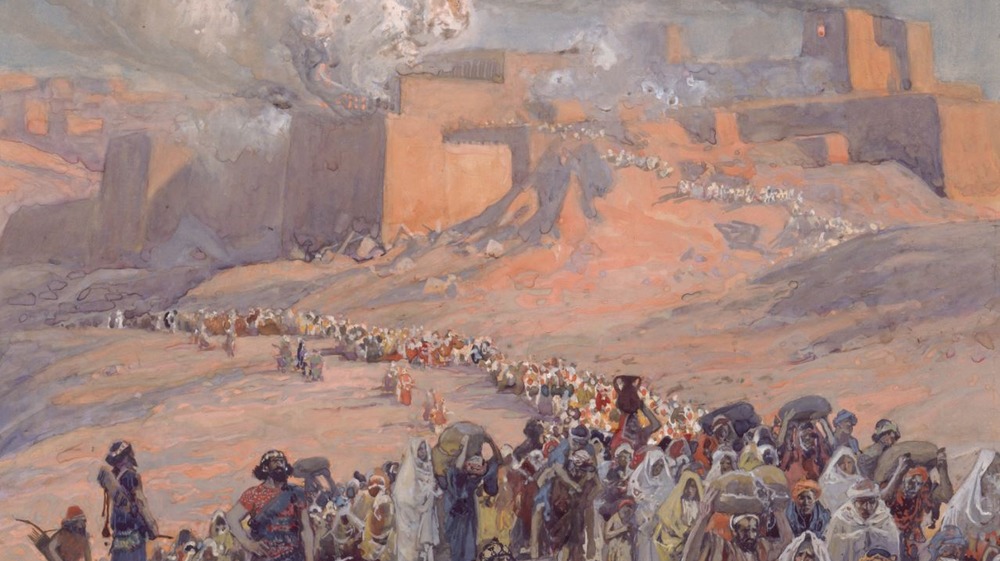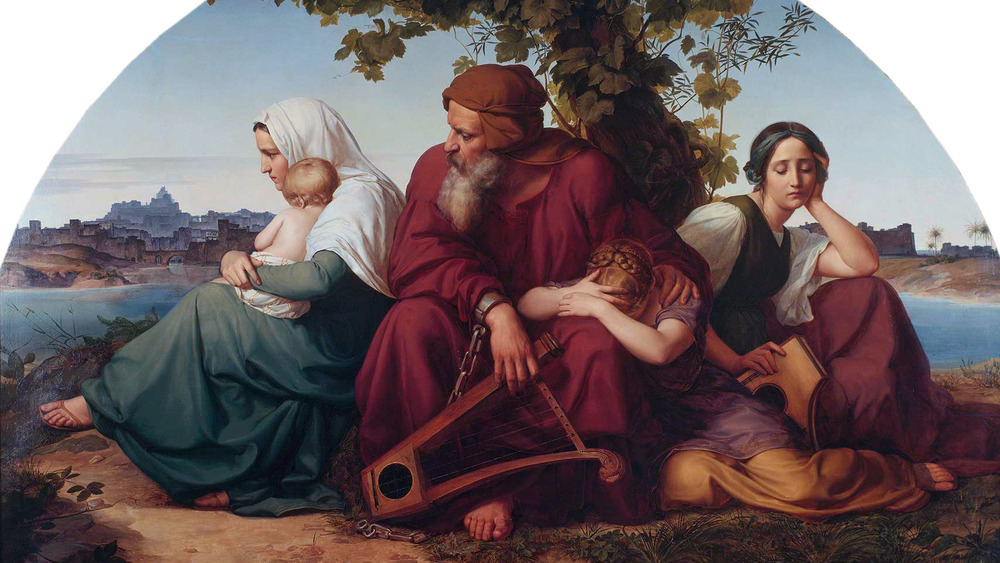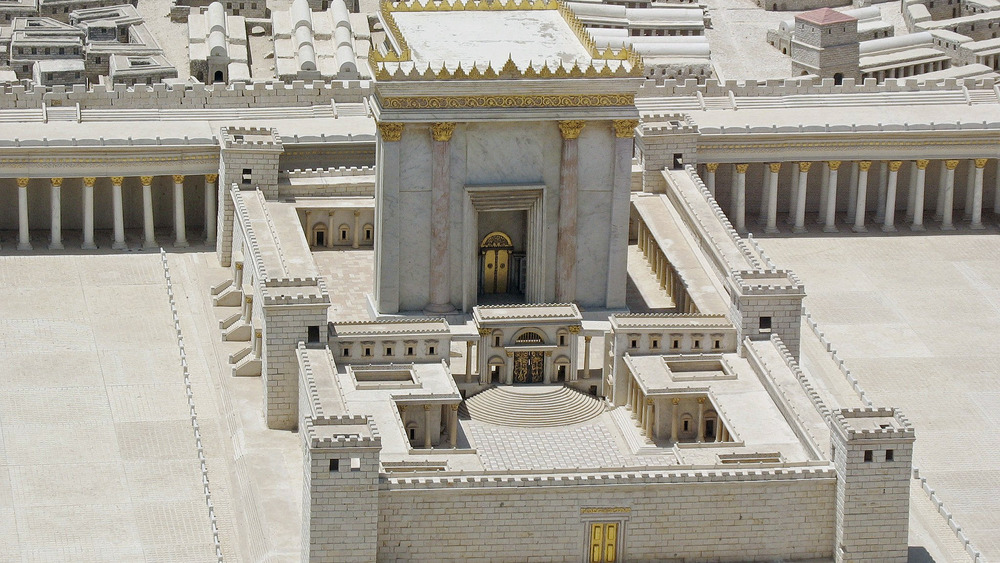The Tragic Story Of The Babylonian Captivity
Throughout history, the Jewish people have been subjected to prejudice, systemic oppression, ostracization, exile, slavery, and mass murder. The Holocaust of the 20th century was a capstone for a millennia-long string of abuses cataloged by the Bible. God's chosen people (as they referred to themselves), the ancient Hebrews, escaped from slavery in ancient Egypt, led by Moses, to search for a home. This well-known, sometimes historically disputed event, the Exodus, happened a staggering 15,000 years ago in the 13th century BCE, per Britannica. They settled in Canaan, the "promised land," and since then the Jewish diaspora essentially hasn't stopped, barring intermittent periods of peace. It was only in 1948 that the Jewish nation of Israel was established, as the US Department of State website says.
One of the most critical events in Jewish history, especially as a defining moment for Jewish culture, is also one of the Bible's lesser known epochs: The Babylonian Exile. Having occurred from 586–538 BCE — again, per Britannica – the Babylonian Exile is the reason why Judaism came into a strict adoption of circumcision, establishment of synagogues, observation of the Sabbath, the use of Aramaic rather than Hebrew, adherence to traditional feasts and prayers, avoidance of intercultural marriage, and more. In fact, as Boston University tells us, the Babylonian Exile is the reason why Judaism cohered into a canonical religion at all.
The people of Judah were conquered, and only some relocated
By the rivers of Babylon we sat and wept / when we remembered Zion / There on the poplars we hung our harps / for there our captors asked us for songs / our tormentors demanded songs of joy
These words, taken from Psalm 137 in the Old Testament, describe the pain and circumstances of the Babylonian Exile more clearly than anything else. Forcibly stripped from their homeland, transported to Babylonia, the Jews of that time longed to return to the Kingdom of Judah — what is now southern, modern-day Israel.
The Babylonian Exile began when, as the Jewish Virtual Library states, the ancient Chaldeans besieged and conquered Jerusalem, ending what's referred to as the "First Temple Period," as the city's temple was destroyed during the invasion. The Chaldeans, per Britannica, came from southern Babylonia (southern, modern-day Iraq), and their king, Nebuchadnezzar, deported the people of Judah to the capital of Chaldea, Babylon. He didn't relocate everyone — only the educated, wealthy, priests, craftsmen, and working professionals. The rest of the "people of the land" (am-hares) were allowed to stay in Judah. It's this division that would come to define the future of Jewish beliefs, culture, and practices.
Those who were forced to live amid a different culture in Babylon clung fiercely to their original national identity, and from this vise-grip a stricter, sterner, more traditional version of Judaism emerged, including a firmer line between Jew and Gentile.
A return to Judah and traditional practices
Even though the Jewish people in Babylon tightly held to their beliefs, they also felt abandoned by Yahweh and His promise to protect and watch over them. They referred to themselves as the gola, ("exiles"), or the bene gola (children of the exile). At this point the Bible basically stops recounting what happened to those still living in Judah (the educated and literate went to Babylon, remember), and the Old Testament splits into pre-exile and post-exile literature, starting with the Book of Lamentations and encompassing prophets such as Ezekiel. Those exiled focused on the reunification of Jews under a renewed Davidian dynasty.
When the Persians invaded and conquered Babylon in 539 BCE, as stated on Ancient History, led by their king Cyrus the Great, the exiles would have their chance. Cyrus led the Jews back to Jerusalem for the specific intent of worshiping Yahweh, and Judah itself became a Persian satrapy (province). This is when Judaism took on the Mosaic (deriving from Moses' era) form it would hold to this day, including a renewed focus on the Torah, the first five books of the Bible. Prophets such as Haggai and Zechariah turned towards messianic preaching.
The people of Judah finished building a second temple in 515 BCE, and stayed under Persian rule until Alexander the Great conquered the region in 332 BCE. Ultimately, Judah would come under Roman rule, as the New Testament recounts.


